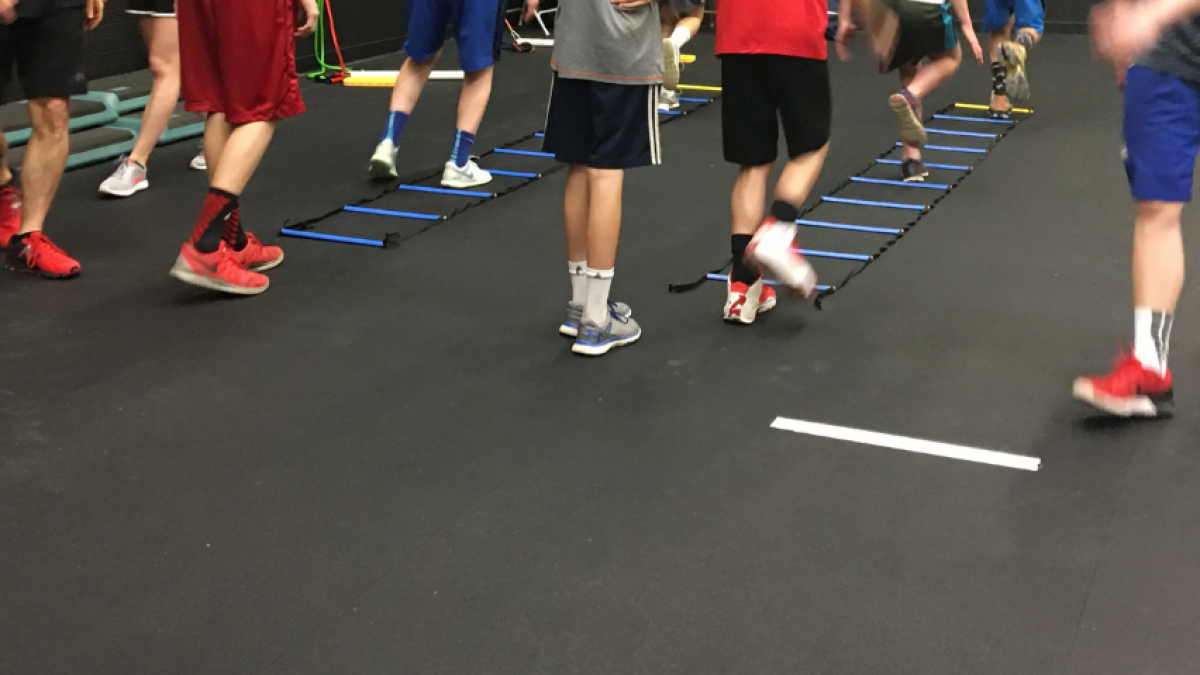Wasting Time with Fast Feet Drills

If you Google ‘fast feet drills’, you will find see thousands and thousands of them. You will also find articles, videos, and graphics of athletes performing all kinds of fast-foot drills.
But, there is a problem.
Just doing random fast-foot drills without a system of execution is like playing tennis holding the racquet the wrong way- systems are a must!
The purpose of fast-feet drills is to make the feet faster, obviously! However, there is a problem with this mindset. It is easy to use ladder drill, dot drill, or line drill and move your feet faster and faster. But if your posture and positions are off- what good is it?
The key to executing drills with the purpose of making your feet move faster is to be sure the kinetic system’s loading is correct.
The feet need to be positioned, so the forefoot is the primary ground contact point. If the heels are lifted high (plantarflexion), there is a poor pattern created with this quickness drill.
When training tennis players, or any athletes, on foot quickness drills, it is good to sacrifice some speed to make sure the athlete is doing the drill correctly and translating to proper loading.
A great example is the agility ladder “Ickey” shuffle drill. This drill has been one of the most popular drills for decades. Athletes who practice it regularly can become very quick at it.
Often, the problem is they get high into plantarflexion, focus on picking the foot up as quickly as possible, and never really create force into the ground or use proper angles for cutting. If that’s not the purpose of why you would use it- then ignore any of the above.
Just the same….
It’s all about position and posture to execute high force into the ground as quick and possible and at the proper angle. My “Ickey” shuffle switches the emphasis from being quick in the middle of the squares to be quick off a wider cut angle on the outside. This simulates a quick split or glides step foot plant angle.
If you want to utilize fast foot drills correctly, you need to create a model of what the movement should look like. This helps you assess, coach, and give feedback. Plus, the athlete understands what you are looking for in terms of technique.
Secondly, you need to develop a system of various fast foot drills.
This system is a way of knowing what fast-foot drill is best for correcting or supporting the “larger” movement. The more significant movement is the actual tennis sport pattern players use on the court.
My final point…
Don’t think you can’t get results with the fast foot drills the typical way. They do increase CNS activation, increase the stretch-shortening cycle, and create tensile loading. The problem is you have to consider the habits that are being created.
Suppose tennis players are habitually being allowed to move their feet in high plantarflexion levels. In that case, you have to imagine that the motor pathway will become established and called upon- not sure any of us want this.
Keep up the great work with fast feet drills. Give some thought to how you want them executed by creating models and have a system of implementation of these drills.
I would love to share this advice with coaches, parents, and players who would benefit from knowing how to use fast-foot drills with purpose. Sharing the knowledge helps keep tennis speed education at the forefront.
 Lee Taft
Lee Taft 